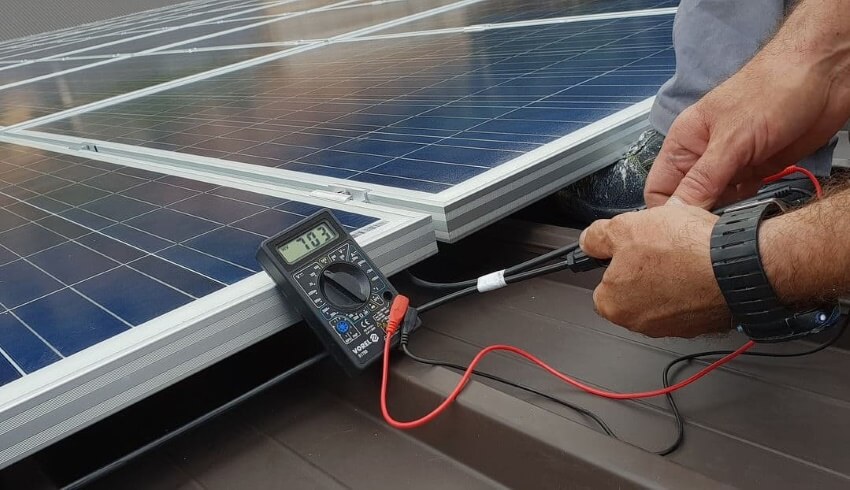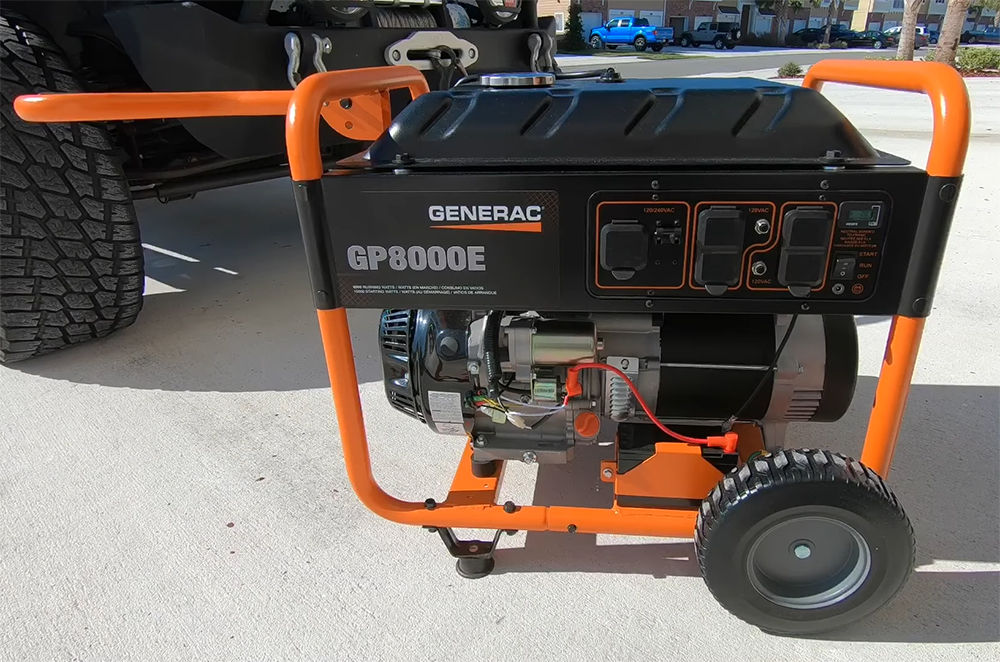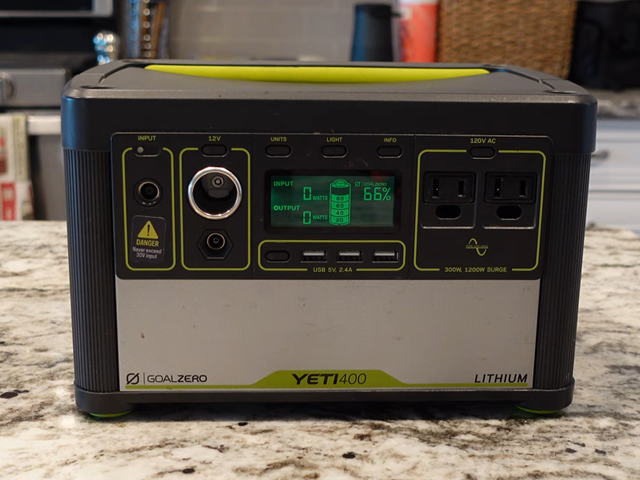
If you’re in the market for a new generator, Generac and Honda are two of the biggest names in the industry. The two companies have a number of competing generator offerings, which can make it difficult to choose whether Generac vs. Honda is right for you.
Both brands put an emphasis on quality and reliability. Generac is known for producing affordable inverter and conventional generators. Honda generators tend to be among the most expensive models on the market, but they have a reputation for lasting decades thanks to the genuine Honda motor inside. In order to help you decide whether Generac or Honda is a better choice for your next generator, let’s compare these two brands head to head and take a closer look at some of their most popular models.
Generac was founded in Wisconsin in 1959, and has been producing generators for nearly its entire 60-year history. All of the company’s manufacturing facilities are in Wisconsin, which ensures that you’re getting the quality and performance of an American-made generator.
Honda, although it’s headquartered in Japan, has a long history in the US. The company began making generators in 1973, and has earned a reputation as one of the most innovative and reliable generator brands on the market.
Both Generac and Honda have taken big steps towards improving inverter generator technology, so you’ll find a lot of inverter models in their respective lineups. The companies are largely matched on power offerings, although Generac’s lower wattage generators tend to focus more on ease of use than Honda’s comparable offerings.
The biggest difference overall between Generac and Honda models is the pricing. Honda is expensive – you’re paying for the brand name, but also the unparalleled reliability and durability that Honda motors are known for. Generac generators are much more affordable, but you likely give up some years of generator lifetime by opting for a Generac motor. Still, users stand behind Generac’s products, so you don’t have to worry much about reasonable durability.
The other difference to note is in the two companies’ warranty policies. Honda has a blanket three-year warranty policy on all of its generators, regardless of whether they’re being put to residential or commercial use. Generac is less generous – the company offers a two- or three-year warranty for residential users depending on the model, but commercial users are typically limited to just a one-year warranty.
With those differences in mind, let’s take a closer look at how Generac’s and Honda’s generators stack up. We’ll focus in on three different popular power classes to examine the gamut of offerings from both companies.
| Generac GP2200i | Honda EU2200i | |
| Type | Inverter | Inverter |
| Peak watts | 2200W | 2200W |
| Rated watts | 1700W | 1800W |
| Engine | OHV, 4-stroke, single cylinder | OHC, 4-stroke, single cylinder |
| Displacement | 80cc | 121cc |
| Fuel tank | 1.2 gal. | 0.95 gal. |
| Run time | 10.75 hrs (1/4 load) | 8.1 hrs (1/4 load) |
| Outlets | (1) 120V 20A 5-20R Duplex; (1) 1.5A 5V DC USB port; (1) 12V DC | (2) 120V Household; (1) 12V DC |
| Start type | Recoil | Recoil |
| Noise level | Not specified | 48–57 dBA |
| Dimensions | 19.7 x 11.4 x 17.9 in | 20.0 x 11.4 x 16.7 in |
| Weight | 46.6 lbs | 46.5 lbs |
| Warranty | 2-year limited (residential)1-year limited (commercial) | 3-year limited (residential and commercial) |
| VIEW ON AMAZON | VIEW ON AMAZON |
The Generac GP2200i and Honda EU2200i are inverter generators closely matched on wattage. Both generators are capable of producing up to 2,200 watts of surge power, while the Honda generator has a slight 100-watt edge in running power. It’s notable that the Honda engine is more than 30% larger than the Generac engine – 121cc vs. 81cc – but both motors are highly efficient four-stroke OHV models.
Although these two generators are similar in many respects, there’s a lot to like about the thought that Generac put into usability. The Generac generator has a slightly larger 1.2-gallon fuel tank, which allows it to run for 10.75 hours at a 25% load. The Honda generator has a fuel tank that’s smaller than one gallon and can only run for eight hours at a 25% load. The difference may not matter much if you need a 50% load or more, though, since you’ll still need to refuel both generators if you want to run them for an entire day. It’s worth noting that the Generac model doesn’t weigh any more than the Honda model, so the larger fuel tank doesn’t impact portability.
Generac also included a USB charging port on its generator. This is a nice touch that allows you to charge a small electronic device like your phone without using one of the two 120-volt outlets. Neither generator has an hour meter, and the rest of the outlet panels are essentially identical.
Honda is renowned for how quiet its generators are, and the EU2200i is no exception. This generator produces just 48 dB at a 25% load and maxes out at 57 dB of noise production. Generac doesn’t rate the noise output of its generator. Users note that it’s relatively quiet – noise definitely isn’t an issue with this generator – but not as silent as the Honda generator.
Given how closely these two generators are paired, it’s hard to ignore the price gap. Generac charges around $600 for the GP2200i, while Honda charges $1,050 for the EU2200i. The Honda warranty is longer, especially for commercial users, but it’s somewhat hard to justify paying almost double for a generator given that most features tilt in favor of Generac in this pairing.
| Generac GP3000i | Honda EU3000IS | |
| Type | Inverter | Inverter |
| Peak watts | 3000W | 3000W |
| Rated watts | 2300W | 2800W |
| Engine | 4-stroke single cylinder, OHV | 4-stroke single cylinder, OHV |
| Displacement | 149cc | 196cc |
| Fuel tank | 1.06 gal. | 3.4 gal. |
| Run time | 5.8 hrs (1/4 load) | 20 hrs (1/4 load) |
| Outlets | (1) 120V 20A 5-20R Duplex, (1) 120V 30A L5-30R Twist Lock; (1) 12V DC 1A/2.1A USB port | (1) 20A 125V Duplex, (1) 30A 125V Locking Plug, (1) 12V DC |
| Start type | Recoil | Recoil, electric |
| Noise level | Not specified | 50–57 dBA |
| Dimensions | 22.2 x 13.3 x 18.4 in | 25.9 x 17.6 x 22 in |
| Weight | 59.5 lbs | 131 lbs |
| Warranty | 3-year limited (residential)1-year limited (commercial) | 3-year limited (residential and commercial) |
| VIEW ON AMAZON | VIEW ON AMAZON |
Stepping up a bit in wattage, Generac offers the inverter GP3000i and Honda offers the inverter EU3000iS. Both generators offer 3,000 watts of surge power, but there’s a pretty big difference in running power – the Generac unit can produce just 2,300 watts, while the Honda model produces 2,800 watts.
In many ways, Generac built a slightly larger version of the GP2200i, while Honda went out and built a dedicated 3,000-watt generator. The fuel tank on the GP3000i is actually smaller than the tank on the GP2200i, at just over one gallon. While that means that the overall size of the generator hasn’t increased much, your runtime is extremely limited. The generator can only run at full power for about one hour, which is very restrictive. The Honda generator, on the other hand, is outfitted with a large 3.4-gallon fuel tank that allows it to run at full power for nearly five hours, or for 20 hours at a 25% load.
Once again, the two generators are pretty well-matched when it comes to outlets. Both offer a 30-amp twist-lock outlet, which is great if you need a generator to power an RV or heavier power tools. The Generac model comes with a USB charging port, which the Honda generator lacks.
Importantly, though, the Honda generator comes with an electric starter in addition to the recoil starter. That’s a huge plus for ease of use. You can always fall back on the recoil starter in case the onboard battery runs down.
Once again, Honda beats Generac on noise. The Honda generator produces just 50 dB at 25% power, which is hard to believe for a generator of this size. Users note that the Generac GP3000i is significantly louder than the GP2200i, estimating that it produces around 55 dB of noise at a 25% load.
Ultimately, a lot of the decision between these two generators is likely to come down to portability. Since the GP3000i is essentially a beefier version of the GP2200i, it weighs less than 60 pounds and is pretty easy for one person to carry short distances. The Honda generator, however, weighs 130 pounds and is clearly designed to require a minimum of two people to carry it. It’s not mounted on wheels, and the cube shape makes it very difficult for one person to grab both handles.
Of course, price matters, too. The Honda generator costs a whopping $2,000 or more, so it’s a big investment. The Generac GP3000i is more modestly priced at $900. Commercial users will want to keep in mind that the Generac unit only comes with a one-year warranty, though, so the extra money for the Honda may be worth it.
| Generac GP6500E | Honda EM6500SX | |
| Type | Conventional | Conventional |
| Peak watts | 8125W | 6500W (7000W 10-second boost) |
| Rated watts | 6500W | 5500W |
| Engine | Generac OHV engine | Honda iGX commercial air-cooled 4-stroke OHV engine |
| Displacement | 389cc | 389cc |
| Fuel tank | 7.2 gal. | 6.2 gal. |
| Run time | 10 hrs (1/2 load) | 10.4 hrs (1/2 load) |
| Outlets | (1) 120/240V 30A L14-30R Twist Lock; (2) 120V 20A 5-20R Duplex | (2) 20A 125V GFCI Duplex; (1) 30A 125V Locking; (1) 30A 125/250V Locking |
| Start type | Electric, recoil | Electric, recoil |
| Noise level | Not specified | 64–66 dBA |
| Dimensions | 27.25 x 27 x 25 in | 41.4 x 27.8 x 28.3 in |
| Weight | 186 lbs | 234 lbs. |
| Warranty | 2-year limited (residential)1-year limited (commercial) | 3-year limited (residential and commercial) |
| VIEW ON AMAZON | VIEW ON AMAZON |
While Generac and Honda’s smaller generators are primarily inverter models, both companies produce burly conventional generators as well. The Generac GP6500E is the more powerful of this pairing, with 8,125 watts of surge power and 6,500 watts of running power. The Honda EM6500SX has 6,500 watts of surge power, although it’s capable of boosting up to 7,000 watts for up to 10 seconds. The generator can hold a continuous wattage up to 5,500 watts. Both generators feature four-stroke, 389cc engines.
Although the fuel tank on the Generac generator is slightly larger, the runtimes on these two models are roughly equal. Both run for 10 hours at a 50% load, which is pretty good for getting in a full day of work without refueling.
Both generators are capable of outputting either 120/125-volt or 240/250-volt power, which makes them good choices for heavy-duty applications. Importantly, the Honda generator has one more outlet than the Generac – a 125-volt, 30-amp twist-lock outlet. That can come in handy if you need to run more tools or appliances at high currents.
In addition, each of the generators is equipped with an electric starter in order to improve ease of use. But, the Generac generator comes with a digital hour meter to track your wattage and remaining runtime, whereas the Honda leaves you guessing on this information.
The Honda generator is also quieter. Producing under 66 dB, this is one of the quieter generators in this power range. The Generac model isn’t rated, but users estimate it is roughly 5-10 times as loud as the Honda.
Both generators are mounted on steel frames and a set of never-flat wheels. That helps significantly with portability, although the Generac is still easier to move around thanks to the fact that it weighs 50 pounds less than the Honda generator. The frames around each generator have pull-out handles to help with towing them behind you.
Despite the extra power available from the Generac generator, it’s still significantly less expensive than the Honda unit. The GP6500E costs around $1,050, while the Honda EM6500SX costs nearly $3,000. That’s an enormous difference given that these generators are so similar on the face – you have to truly believe in the superiority of Honda motors to justify the difference. Commercial users will want to keep in mind that Generac only offers a one-year warranty to them.
Honda and Generac both produce high-quality generators that can satiate most power needs. The two companies’ generators are largely matched in terms of power, ease of use, and portability. However, Generac generators are significantly cheaper than Honda generators almost across the board. Commercial users may see the premium price tag as worthwhile given that Honda offers them a full three-year warranty.
But, in cases where Generac offers more power, like for the GP6500E, or almost identical features, like for the GP2200i, it’s hard to stomach the high cost of the competing Honda models. Ultimately, this comes down to whether you believe that Honda engines are truly more durable than Generac engines by a large margin. Users are split on this question, and there’s plenty of anecdotal evidence that Generac vs. Honda generators last equally long and perform equally well.





